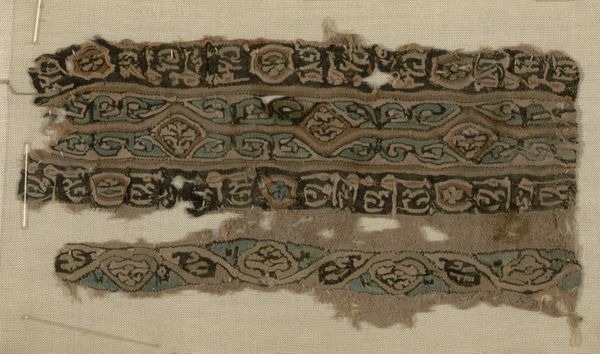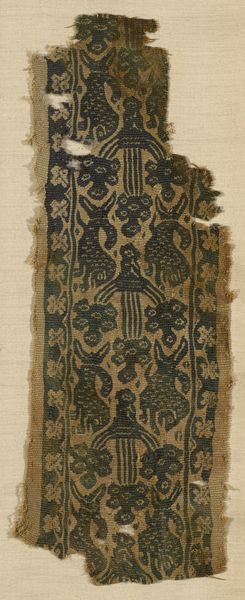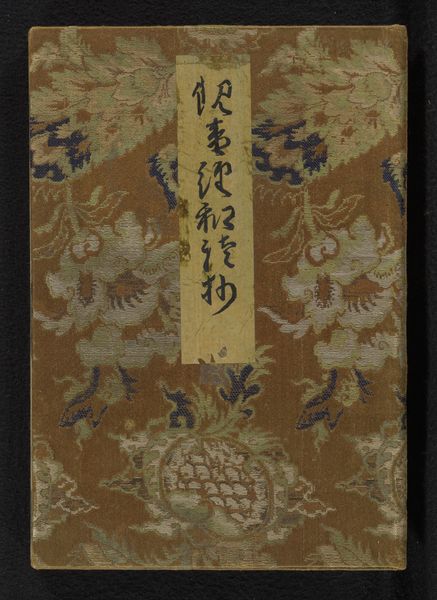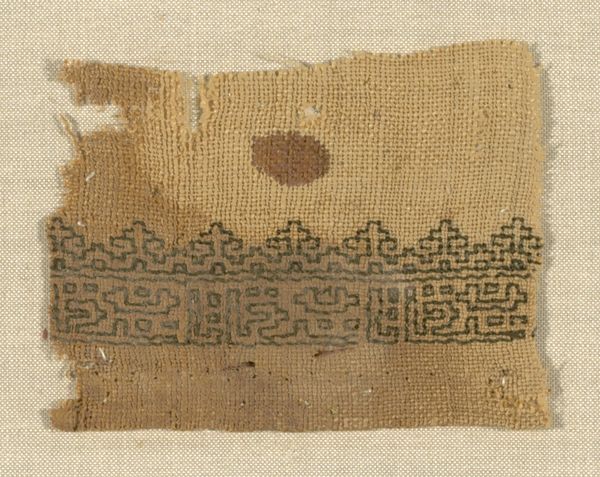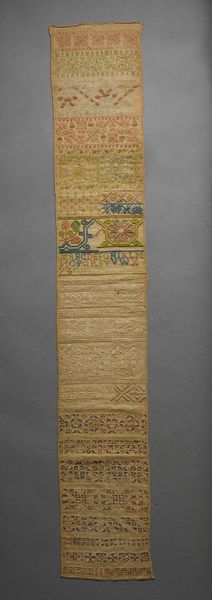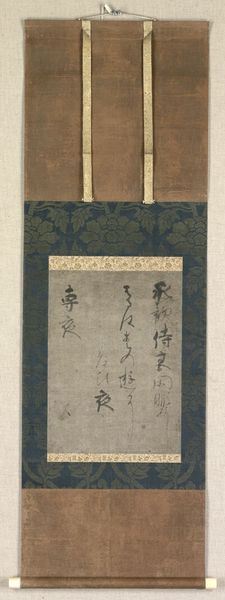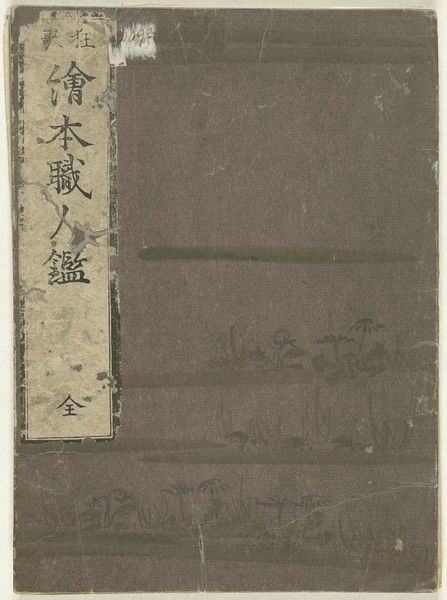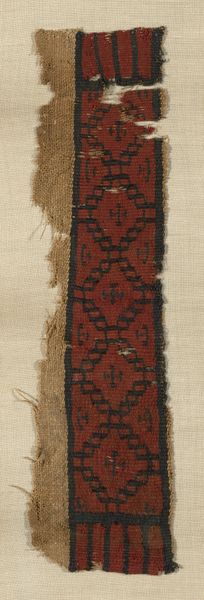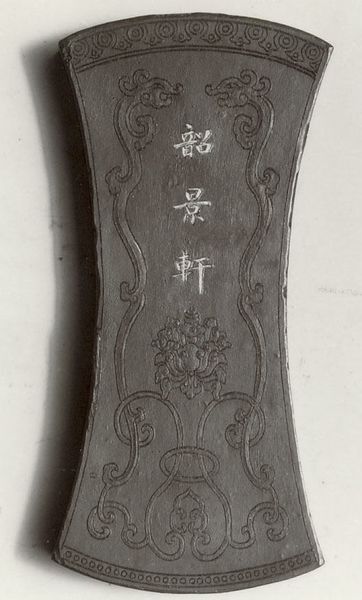
fibre-art, weaving, textile
#
fibre-art
#
pattern
#
weaving
#
textile
#
ancient-mediterranean
#
islamic-art
Dimensions: 19.4 × 4 cm (7 9/16 × 1 1/2 in.)
Copyright: Public Domain
Editor: This woven band, created around the 5th century in Roman Egypt, has such an ancient, fragile quality. The patterns, in what looks like dark blue and tan fiber, are just mesmerizing. How would you interpret its cultural relevance? Curator: Its presence in the Art Institute speaks to evolving tastes and collection strategies. Originally, objects like these, small textiles from daily life in Egypt, were often viewed as ethnographic curiosities. Now, their artistry and the stories they tell about a multicultural society are recognized. Consider where this piece likely originated – homes or workshops, far removed from royal patronage. Yet, these textiles reveal intricate, intentional design. Editor: It's incredible to think about the hands that created this so long ago. What would its purpose have been originally, and how does that inform our understanding of the object today? Curator: Probably as part of clothing or furnishings. Understanding the intended use changes our perspective, doesn't it? We go from viewing it as a simple artifact to recognizing its role in ancient fashion and domestic life, reflecting status, belief systems, or even just personal style. This transition from utilitarian object to museum piece raises questions about value. Who decides what deserves preservation and display? What criteria are applied, and how might they shift over time? Editor: So the piece reflects a larger story of cultural valuation, doesn't it? Curator: Precisely. The artwork and the museum's very act of collecting both become cultural statements. Museums hold tremendous power in shaping public understanding and, ultimately, what we remember. Editor: That’s given me so much to consider, looking at this "Band." Thanks! Curator: My pleasure! Looking critically at the evolution of such items from ancient daily life into revered artifacts helps us understand the changing dynamics of history and culture.
Comments
No comments
Be the first to comment and join the conversation on the ultimate creative platform.

